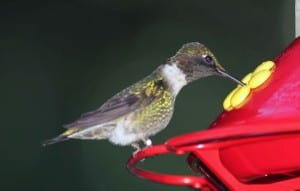
By Jennifer Fairfield
(Publisher’s note: Part one of this column ran yesterday.)
If you’re starting veggies from seed, now is the time to start pepper and tomato seeds indoors, so they will be ready to put out in your garden in about eight weeks.
Eggplant should be started in about a week. Plan to put tomato and pepper plants out in the garden around Memorial Day – by then, the nighttime temperatures are pretty consistently above 50°, and we aren’t likely to see frost again until fall.
Eggplant likes it even warmer than the other two, so waiting an extra week can help to ensure the temps will be to their liking.
Putting plants out too early will only stunt their growth, so don’t be in too much of a hurry.
Once the soil is workable, peas, lettuce, and spinach can be planted in the veggie garden. Carrots, radishes, and beets can go in once the soil temperature is above 40°. I like to plant these early growers in “succession” – planting some every week or two, up until about mid-May – to spread my harvest out, so that I can enjoy them longer into the season, rather than all at once.
Just keep in mind that peas, lettuce, spinach, and radishes are cool-weather plants that won’t do well as the temperatures start to really warm up, so don’t plant them too late into the season.
Cabbage and kale transplants, as well as onion sets, can generally go out by mid-month, as they are somewhat tolerant of frosts – just be sure to harden them off before setting them out in the garden; broccoli and cauliflower transplants, which aren’t quite as tolerant of the cold, can be set out by the end of the month.
“Workable” soil is soil that is not frozen, and not too wet. To determine if your soil is workable, take a handful of soil and squeeze it. When you open your hand, if the ball of soil falls apart easily, with only a little pressure from your fingers, and is a bit crumbly, then it’s safe to start to work in the garden.

<strong>For the birds: </strong>
If you have old bird houses that are in need of replacing, now is the time to do that, and to clean out existing houses. Check existing bird houses before cleaning them out to make sure they aren’t already being occupied. If the nesting materials in the box look at all new and fresh, leave them – it’s an indication you already have tenants.
If the materials look old, clean them out to give the birds a fresh start, and to remove any pests that might be making their home in the old nesting materials.
If you’re considering putting out nesting materials for your birds, be sure to check out the Audubon Society’s <a href=”https://thegardenmill.us8.list-manage.com/track/click?u=92da951451465efb7fdf52021&id=219061dc73&e=1f6363dd21″>website</a> to learn the do’s and don’ts first.
I have not seen any evidence of hummingbirds or orioles in our area yet (can you blame them?!), but they’ll be here as soon as the weather warms up a little. Generally, we start seeing them in mid-April to early May. You can track this year’s hummingbird migration at this <a href=”https://thegardenmill.us8.list-manage.com/track/click?u=92da951451465efb7fdf52021&id=61aacbedaa&e=1f6363dd21″>website</a>.
Make sure your feeders are ready for them – check for cracks and replace them if needed. As the temperatures start to warm up, put your feeders out during the day to help early arrivers find food. If the temps dip below freezing at night, be sure to bring the feeders indoors to prevent cracking.
If you’ve ever had a bird collide with a window at your home, you know how horrible it can be – if the bird doesn’t die from the impact, it can be left vulnerable to predators as it lies hurt on the ground. There are many ways you can help prevent bird collisions with your home’s windows, and The National Audubon Society has lots of suggestions in this <a href=”https://thegardenmill.us8.list-manage.com/track/click?u=92da951451465efb7fdf52021&id=ce27dbeebd&e=1f6363dd21″>brochure</a>.
You may have heard or seen reports of “Avian Flu” being found in Michigan recently. This is not the same as the mysterious <a href=”https://thegardenmill.us8.list-manage.com/track/click?u=92da951451465efb7fdf52021&id=07a7ae8e52&e=1f6363dd21″>bird illness</a> that had been reported in wild bird populations last year that caused many states to make “do not feed” recommendations for much of last summer. That illness seemed to disappear by fall and has not reappeared to-date (and it never seemed to reach Michigan).
Avian Flu is a disease that mostly impacts backyard poultry and waterfowl – some songbirds can apparently carry it but don’t appear to be affected by it. If you have backyard chickens, ducks, or geese, you should definitely keep an eye out for signs of Avian Flu in your flock. Michigan DNR provides updates and information <a href=”https://thegardenmill.us8.list-manage.com/track/click?u=92da951451465efb7fdf52021&id=6e5ee0bd88&e=1f6363dd21″>here</a>.














